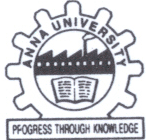| 
Home
Introduction
CRZ
Study Area
Objectives
&
Methodology
Results
|
Coastal Regulation Zone of Kanyakumari District
Geographic Location:
This
part of the coast starts from north of Vattakkottai and ends with Kerala State
boundary. The coastline runs N-S, S-W and SE-NE directions. Geographically it
is located between 77º 2'-77º35' E longitude and 8º 7' 30''-8º15" S latitude.
Fig: Coastal Regulation Zone Information
in Tamil Nadu : Kanyakumari District

Physiography:
Sand
dunes and teri soil occur along the coast and away from the coast of Kanyakumari.
The southern part of the coast are sandy beaches with beach sands containing heavy
minerals on the eastern and western sides of Kanyakumari. The sand dunes rises
up to 67m. The general relief goes over to 15m above MSL .
Geology:
This
stretch comprises mainly of Archaeans, Quaternary and recent geological formations.
Calcareous shell limestone of sub recent origin is seen near Kanyakumari. The
area between Kanyakumari and Kuzhithura is mainly covered by thick laterite soil
dotted with few rock outcrops.
Coastal Geomorphology:
The
following coastal geomorphic features are observed along the coast of Kanyakumari
district:
- Beach
- Beach ridges
- Cliffed
coast
- Sand Dunes
- Beach
Terraces
The
marine landforms along the Kanyakumari district is restricted to the width of
less than 1km. Due to high relief of inland areas which represented the slope
of the Western Gnats when compared to the Eastern Coast.
Distribution
of Coastal Regulation Zones:
The
different coastal regulation zone class of Kanyakumari district coast and their
areal extent are presented in the Table.12.
Table.12.
Coastal Regulation
Zone classes and their areal extent of Kanyakumari District.
| CRZ-I
sq.km | CRZ-II
sq.km | CRZ-III
sq.km | LTL
km | HTL
km | 100m
line km | 200m
line km | 500m
line km | | 8.19 |
6.77 |
33.29 |
64.65 |
101.23 |
Nil |
84.49 |
80.45 |
Natural Resources:
Water
Sedimentary
formations are traversed in coastal areas, comprising of sand, clay, sandstone,
calcareous sand with shall inclusion, laterite, lateriate ganges, granite gneisses,
charnockite, pegmatite and quartz. Dug cum bore wells and shallow tube wells are
prominent in this area. The water table has been highly depleted due to extraction
of ground water for irrigation.
Mineral
Garnet
sand, Illmenite sands, salt and Gypsum are the main minerals resources of this
coast . In Manavalakuruchi heavy minerals like Illmenite, Garnet, Zircon and Rutile
occur and are mined.
Human
Settlements:
The
coastal part of Kanyakumari comprises of five taluks, viz., Agasteeswaram, Rajakkamangalam,
Kurudancodu, Killiyur and Munchirai. The population of this district is 16,00,349
out of this 8,03,839 are male, 7,96,510 are female and 11,48,778 are literates.
Tourism:
Kanyakumari
is the land end of the Indian Peninsula, where waters of the Arabian Sea, Indian
Ocean and Bay of Bengal meet. It is one of the Piligrim Centre of India.
Industries:
The
unit of M/s. Indian Rare Earths Limited is located at Manavalakurichi. The unit
manufactures illimenite, rutile, zircon, monzonite, garnet and zirconium dry frit.
This unit discharges 1170 KLD of trade effluent.
Climate:
The
climate is hot and dry and the sea breeze mitigates the heat to some extent. The
period from January to May is marked by unusual hot climate with 38º C. The relative
humidity while varies from 51 to 78%. The coldest month is cember with temperature
dropping to minimum of 25º C. Generally the area receives rainfall from the Northeast
monsoon (October to December).
|

